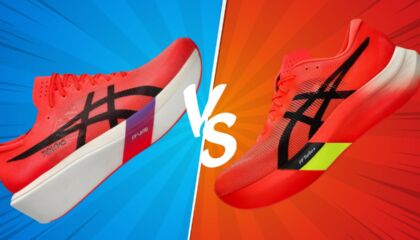


The Kayano is on its 31st iteration and it's one of the most popular true stability trainers in the world. It has a firm medial post and no floating plastic Trusstic shank. It costs $165.
The Kayano Lite is on its 3rd iteration and is a modern interpretation of the traditional Kayano. It doesn't have a firm medial post or a Trusstic shank. It also costs $160.
Which one of these stability trainers is better for you?
The Kayano has one type of foam in its midsole: FF Blast+.
The Kayano Lite has a single-density Flytefoam midsole. It has smoother ride transitions than the Kayano but it has a stiffer forefoot due to the absence of FF Blast+.
The ride of the Kayano is softer than the ride of the Kayano Lite due to the FF Blast+ in the midsole so it’s better for longer runs at slower paces.
The firmer, lighter Kayano Lite is better for shorter, faster runs. It’s more nimble than the Kayano and it feels more snappy.
Both trainers have gel in their midsoles. The Kayano Lite only has a small amount in its forefoot but the Kayano has silicone gel in its heel.
Stability is better in the Kayano than in the Kayano Lite due to the extra stability elements. It has a Dynamic Duomax medial post which the Kayano Lite doesn’t have.
On the outsoles, both trainers have firmer, more durable AHAR + on the heel, with softer AHAR rubber on the forefoot.
The Kayano has a plush, comfortable upper filled with generous amounts of foam. It has a thick, padded tongue which is gusseted so no tongue slide occurs. The Kayano runs warm so it’s better suited to cooler climates. It fits true to size and is available in a wide version too.
The Kayano Lite also has a comfortable upper but it’s stripped down compared to the Kayano and not as plush. It’s not as padded so it’s more breathable than the Kayano and better suited to warm climates. The Kayano Lite fits true to size and is only available in a standard width.
If you’re looking for a trainer for mainly long, slow runs, the Kayano is the better shoe for you. It has a higher level of stability and is the more comfortable shoe. The Kayano is heavier than the Kayano Lite but it has a softer ride.
If you’re looking for a lighter, faster trainer for short runs, the Kayano Lite is the shoe for you. It has a stiffer forefoot which makes it more snappy and it feels more agile than the Kayano. The Kayano Lite weighs less than the Kayano but it’s not as stable.